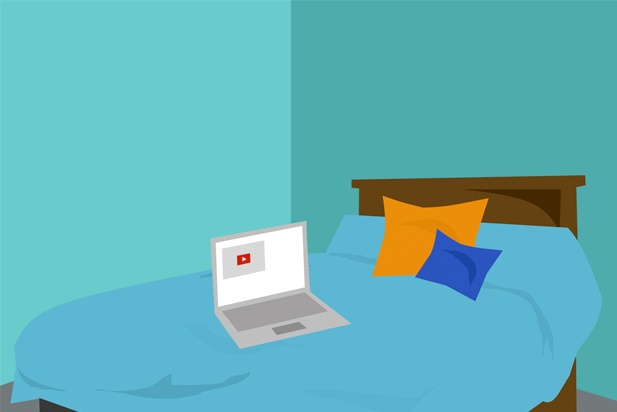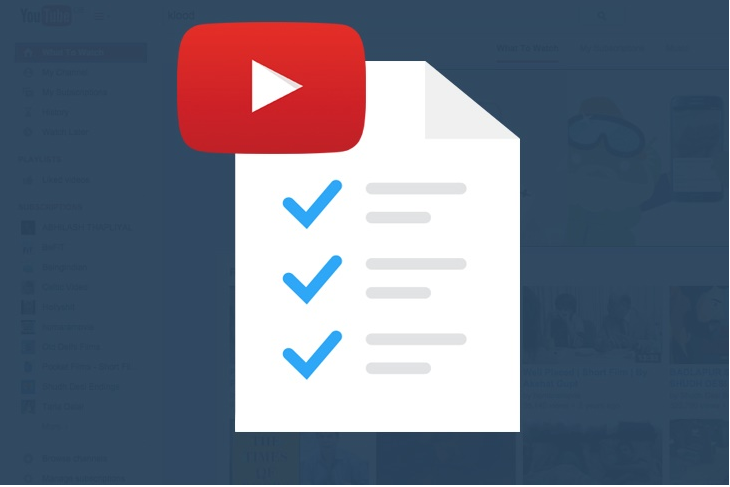
Get weekly
HubSpot updates
Zoella– Name ring a bell? Chances are if you’re over a certain age you probably won’t have heard of the social media queen bee, who boasts over 2.5 million followers on Twitter, 3.5 million followers on Instagram and a staggering 6.6 million subscribers on her main YouTube channel. Zoe, 24, who grew up in a small town in Wiltshire is quite possibly the most famous women that you’ve never heard of, but with a legion of devoted fans she’s a power house in the world of digital marketing. Zoe is a Vlogger, (yes you did read that correctly) who uploads 10 minute (ish) videos each week, talking about her favourite beauty and fashion picks, video diaries of her day or even offering advice to her fans on how to tackle day to day struggles, whilst sitting crossed legged on her bed. Her weekly content attracts on average 1.8 million views per video and reaching her target audience of 13-17 year olds from all around the world. Unsurprisingly with content that popular comes a fully fledged career, making her wage from advertising fees from adverts placed before her video as well as partnerships with brands, and she’s not the only one of her kind. Zoe and her friends post about a variety of content, sharing their life with the world each day through their YouTube Channels all whilst collecting billions of views between them. A phenomenon that has taken over the world of digital marketing for big brands and independent retailers alike.
At this point, you’re probably wondering how on earth you hadn’t already discovered these Internet stars, but really you’re not the only one pricking up your ears to the YouTube revolution. For brands, social media is no longer an option; customers expect a presence they can interact with along with engaging content. In fact a social media campaign can make or break a brand image and have a significant impact on sales. As you already know, the internet has shifted the way brands communicate with their customers, and while the focus for many digital marketers is Facebook and Twitter, it’s time to take to take the content up a notch and view YouTube as an leading social media platform. Not convinced? Let me throw some stats your way. In a recent study conducted by Pixability, found that more content is uploaded to Youtube in 60 days, than all 3 major US networks have generated in 60 years, with 17% off all internet traffic flowing through the site from 1 billion monthly users to use the second largest search engine in the world; YouTube.
So now that I’ve caught your attention, you’re probably wondering how could you use this platform to benefit your brand? Naturally you might think, what are the big brands doing? Surely they’re leading the way forward with their giant PR and marketing teams? Wrong! It seems that even the biggest brands have struggled to nail consistent interactions and high subscriber rates. In a recent video index published by Touchstorm looking at the ‘Top 100 Brands’ it turned out that among 5,000 of the highest ranked channels on YouTube only 74 belonged to brands. Brands like Pepsi and Coke can’t seem to make it into the Top 10, with the Mormon Church out ranking the likes of Microsoft and Apple.
“It’s pretty simple formula,” says Touchstorms CEO Alison Provost “Make the right content and market it right, that means acting like a publisher.”
Ultimately this means examining your target audience, deciding whether to inform or entertain, specify in a category, or even create a web series. Don’t fight the trends just because they seem different to what you’ve worked with before it’s because they are different that this kind of content works so well! YouTube gives anyone with access to a camera and the Internet an opportunity to upload their thoughts and feelings, but rather than encrypting it into text they’re able to emote as you would with somebody face to face. That’s why Vloggers such as Zoe are so popular, because they don’t represent an unattainable image and are relatable figures giving honest reviews. For a certain generation YouTube is their TV, and rather than seeing a handful of pushy adverts in repetitive slots around their favourite shows that feature celebrities, they’re viewing an everyday icon promoting tried and tested products.
So what makes a brand successful online? Well, as we’ve already learnt it’s not quite as simple as taking content for TV and repeating it online, but it’s not quite as simple as paying a Vlogger to become your online advocate.
With over 500,000+ subscribers American Vlogger Nikki Phillipi has had her fair share of brand integration deals, and in a video she uploaded (notably sponsored by NetFlix) titled “What is a YouTuber!?” she answers questions about the new business of being a full time YouTuber. When the topic of Brand integration is brought up, Nikki explains that although she’s probably a good fit for brands across the beauty industry, not all brands will be a good fit for her, much like a consumer. Often the process is slow, with a brand reaching out, offering to pay her to mention a product in a video. She’ll then decide if the brand/product is a something she’s attracted too and if she’s not used the product before will often ask to trial it. If Nikki feels that the product is worth the praise she’ll move forward with the brand, negotiating a cost-per-click rate for a link in the description bar, which often can be paid along side a fee for the initial promotion.
“I would rather not make as much and do stuff by myself, for free, with stuff I have picked up from the drugstore, than work with a company who either doesn’t understand the value of it, or thinks that we don’t and are like here $100” Nikki explains.
She goes on to compare traditional media and the cost of making a commercial and then buying air time to collaborating with a Vlogger for a YouTube video, making it seem like a inexpensive competitor. Within all the back and forth, communications can break down and deals will fall through. Speaking at the Drum Live in London, Jim Chapman a fellow Vlogger and close friend of Zoella, said he receives offers from brands everyday to work with him, but revealed 90% are turned down because companies “what to make an ad” and not content that will resonate with his audience. The brands that do make it through the 10% margin can expect a call to action with a 40% click through rate from links embedded into his channel compared to the industry standard of around 0.2% on banner ads with a 10% click through rate to his 728,000 followers on Twitter.
My advice?
- Take a look at your brands image, and your target consumer – who are they? It’s not just a handful of people committing to a career of Vlogging, thousands of users from around the world produce all sorts of content are uploading daily so you’re quite likely to find a Vlogger who ticks the same boxes as your target consumer.
- Rather than make contact with a formal email, use a more personable creative approach. Just like your consumers, Vloggers don’t want to be sold too. If you’ve got a strong Twitter presence reach out with a tweet, If you’re a smaller business why not send your products to their PO Box or management office with something fun to catch their eye amongst the vast array of products sent on a day to day basis.
- Work on that relationship and don’t be pushy. Ask for feedback on products and keep communication natural before rushing into a business proposition.
- Always remember that YouTube is its own digital platform, and remain open to new ideas and approaches. It’s unlikely you’re product is going to be featured in a similar way to that as it might have been in print or traditional media.
- If you don’t have a big budget you don’t have to rule out YouTube as an option. There are thousands of Vloggers with varying sizes of audiences. Much like television if you can’t afford an advert for prime time on ITV on a Saturday night, you can always opt for a channel with a smaller following.
To conclude, YouTube as a social media platform is undeniable – and with Blogging and Vlogging becoming increasingly popular, don’t let your PR and marketing teams ignore the revolution. Why not join the likes of Turkish Airlines, who worked with adventure bloggers FunForLouis and Steve Brooker and Skype who worked with JacksGap to create a series called ‘Following heart’. Brands like Kellogg's cereal Krave, and Volvic Water also got involved with a selection of Vloggers, setting them a series of wacky challenges, whilst online fashion and beauty retailer Very worked with makeup artist and daily vlogger, Tanya Burr for a series of helpful tips and tricks videos on their channel. These are just a handful of examples of brands who are utilising the Vlogging revolution - will your brand be next?

